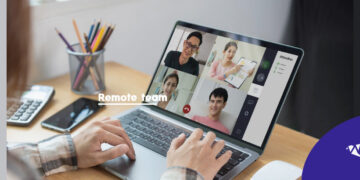Not having to rent / equip an office space or bear the regular administrative and operational expenses to maintain an employee base running may seem hard to believe, right? Today remote work is making it possible.
However, considering the post-pandemic situation and the success of remote work, more and more companies are choosing to switch to a completely remote model. The many benefits of remote working give companies more reasons to try to change the way they work.
For the model change to be successful, you should also consider choosing the right RPO recruitment strategy and hiring the right people to work efficiently with fully remote processes. With a fully remote model, employee engagement and performance management have also become key areas to focus on.
Benefits of Remote Working
It cannot be denied that remote working has its advantages, both for the company and for individual employees.
It allows workers flexibility, control and autonomy. On the other hand, management can evaluate employees based on their productivity and results rather than the number of hours they have spent in the office.
Remote working also offers companies the advantage of reducing costs, as there is no need to pay rent and overhead costs. Setting the right expectations for remote work leads to its many benefits.
RPO recruitment strategy
When you opt for Recruitment Process Outsourcing (RPO), you allow a pool of talent acquisition and recruiting experts to come in with a clear vision to help you find the right candidates you need for business growth and efficiency.
RPO allows HR to focus on other vital functions, as well as the entire company to be more focused on its core activities. You can opt for different types of RPO strategies depending on the needs of your business. It can be a Project-based Model, end-to-end RPO services etc…
Hire the Right People
In the same way as taking the right recruitment strategy, hiring the adequate talent for the jobs is a key factor.
In companies where employees are completely remote, the job applicants need to be proactive, and for most day-to-day tasks, they don’t need to consult higher authority figures frequently. It’s also important to make sure you hire people with excellent digital communication skills and who have received training in the IT specific to your business.
While companies can outsource a remote workforce anywhere in the world, it is more convenient to do so with neighboring countries such as Mexico. This way your meetings can be held in similar time zones. If you have a relatively large labor force, you can even hire a coordinator to supervise and manage remote employees.
Manage employee performance
When it comes to remote work, you can’t control the time employees spend working on a project or task and managing a small task becomes almost impossible. Instead, organize your employees into small teams and be clear about the goals that each area must achieve. Then measure their performance based solely on the KPI’s they most focus on.
Recruit, incentivize, and evaluate based on your employees’ remote work results and deliverables.
Employee engagement
To successfully build and manage a completely remote workforce, management must also be prepared with the proper management and support strategy that enables employees to feel motivated and engaged.
In addition to hiring people who can work efficiently remotely, it is important to onboarding and encourage employees to feel part of the culture of the company. To keep them engaged and living the organizational culture, constant communication, rewards, and collaboration mechanisms will be important.
In a face-to-face work environment, human interaction promotes innovation, productivity, and new ideas. In order to make up for this lack of interaction, keep employees engaged through different activities and regular meetings where their concerns and ideas are also heard and discussed.
It’s also important to celebrate every success big or small to maintain employees engaged. By hosting informal events online, you can also achieve the goal of employee engagement by enhancing their experience and interactions.














